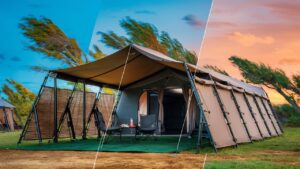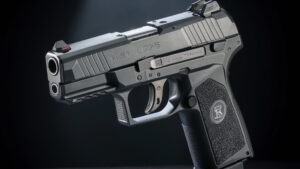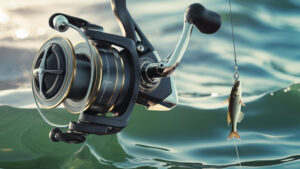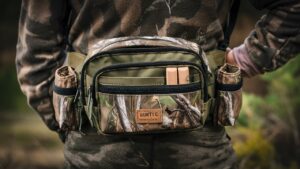Imagine capturing every twist, turn, and thrill of your bike ride from the perfect angle. Mounting an action camera on your helmet allows you to do just that, transforming your adventures into stunning first-person videos.
Whether you’re biking through rugged trails, skiing down a snowy slope, or riding your motorcycle on a scenic route, having your camera securely attached to your helmet ensures you never miss a moment. But how do you get it just right?
If you’ve ever struggled with shaky footage or a camera that just won’t stay put, you’re not alone. In this guide, you’ll discover the foolproof steps to mount your action camera on your helmet with ease. We’ll dive into the best techniques and tools to ensure your camera stays secure, giving you peace of mind and freeing you to focus on the thrill of the ride. Stick around to learn how you can capture your adventures like a pro, every single time.
Choosing The Right Mount
Securely mounting an action camera on a helmet enhances video capture during adventurous activities. Choose mounts that offer stability and easy adjustment. Ensure the mount fits the helmet snugly to prevent unwanted movements while recording.
Choosing the right mount for your action camera is crucial when aiming for that perfect shot while riding. The mount you select can significantly impact your video’s stability, angle, and overall quality. Imagine capturing your thrilling downhill ride with a shaky camera or a poorly-angled view. That’s a scenario you want to avoid.
Understanding Mount Types
There are several types of mounts available, and each has its unique benefits. Curved mounts are excellent for helmets with a rounded surface, ensuring a snug fit. Flat mounts, on the other hand, are perfect for helmets with flat areas. Chin mounts are popular as they provide a perspective similar to your point of view, giving viewers a real sense of your ride.
Consider Your Helmet Design
Every helmet is different, and this affects how you can mount your camera. Does your helmet have vents? If so, you might need a strap mount to avoid damaging the helmet’s integrity. If your helmet has a lot of curves, a curved adhesive mount may be more suitable to ensure a secure attachment.
Evaluate The Camera’s Weight
Your camera’s weight can influence your choice of mount. A heavier camera might require a sturdier mount or even additional accessories like a tether for extra security. Lightweight cameras offer more flexibility, allowing you to choose almost any type of mount without worrying about stability.
Think About Adjustability
Adjustability is key to capturing the perfect shot. A mount with adjustable arms or pivots allows you to change the camera angle effortlessly. This flexibility can make a big difference, especially if you plan on switching between different activities or terrains.
Test For Stability
Before hitting the road, test your mount for stability. Give it a few shakes or simulate the movements you expect during your ride. This simple test can save you from the disappointment of shaky footage. How stable does the camera feel? If it wobbles, you might need to adjust the mount or try a different type.
Choosing the right mount requires a bit of thought and experimentation. But it’s worth the effort to ensure your action camera captures every thrilling moment of your ride. Have you found a mount that works perfectly for your adventures? Share your insights and help fellow enthusiasts make the best choice!
Safety Considerations
Mounting an action camera on your helmet requires careful attention to safety. Proper installation ensures your camera stays secure during all activities. Consider these safety aspects to protect yourself and your equipment.
Choosing A Secure Mount
Select a mount designed for helmets. A secure mount prevents the camera from falling. Check for strong adhesive or straps. A secure fit is essential for stability.
Testing Stability Before Use
Test the camera’s stability before heading out. Ensure it doesn’t wobble or shift. Shake your helmet gently. A steady camera means safer footage.
Checking For Obstructions
Avoid blocking your view or movement. Place the camera where it won’t interfere. Ensure clear visibility and free head movement. Safety starts with clear vision.
Ensuring Weight Balance
Balance the camera’s weight on your helmet. Uneven weight can affect your neck. Adjust the position for even distribution. Comfort enhances safety.
Maintaining Helmet Integrity
Don’t compromise helmet safety for the camera. Avoid drilling holes or permanent changes. Keep helmet structure intact. Your safety depends on a strong helmet.
Types Of Helmet Mounts
Mounting an action camera on a helmet offers thrilling first-person views. Choosing the right mount is crucial for stability and safety. Various types of mounts are available, each with unique benefits. Understanding these options helps find the ideal fit for your helmet. Below, explore the different types of helmet mounts.
Adhesive Mounts
Adhesive mounts stick directly to the helmet surface. They provide a secure hold. These mounts are easy to install and adjust. Ensure the helmet surface is clean before attaching the mount. Adhesive mounts are ideal for smooth helmet surfaces. They offer a low profile look and minimal weight.
Clamp Mounts
Clamp mounts attach to the helmet edge. They grip tightly, ensuring a stable hold. They are easy to install and remove. Clamp mounts are suitable for various helmet types. They offer flexibility in positioning the camera angle. No adhesive is needed, preserving helmet surface.
Strap Mounts
Strap mounts wrap around the helmet. They use adjustable straps for secure placement. Ideal for helmets with vents and irregular shapes. Easy to install and reposition. Strap mounts are lightweight and versatile. They offer a simple solution for mounting on any helmet.
Preparing Your Helmet
Mounting an action camera on a helmet requires careful preparation. Start by selecting a flat or curved adhesive mount that fits securely. Ensure the surface is clean and dry for strong attachment. Attach the camera firmly to capture thrilling adventures without worrying about it falling off.
Mounting an action camera on your helmet is a fantastic way to capture thrilling moments on your rides. But before you get started, it’s crucial to prepare your helmet properly. This ensures not only the security of your camera but also your safety.
1. Clean The Surface
Start by cleaning the surface where you plan to mount the camera. Dust and dirt can weaken the adhesive, which might cause the camera to fall off. Use a damp cloth and mild soap to wipe the area clean.
Let it dry completely before moving on to the next step. A dry surface ensures better adhesion.
2. Choose The Right Spot
The position of your camera affects the video quality and field of view. Consider placing it on the top or the side of your helmet. Each spot offers a unique perspective.
Experiment with different angles to find what works best for you. Think about what you want to capture most—straight ahead or more of the side view?
3. Check Helmet Material
Not all helmets are made the same. Some materials might not hold adhesive mounts as well. Double-check the material of your helmet to ensure compatibility with the mount.
If you’re unsure, consult the helmet’s manual or manufacturer’s website. This step can save you from potential mishaps.
4. Assess Visibility And Balance
Mounting the camera should not obstruct your vision or imbalance your helmet. A misplaced camera can be distracting and even dangerous.
Try wearing the helmet with the mount and camera attached. Does it feel comfortable and balanced? If not, adjust the placement accordingly.
5. Safety First
Your safety should always come first. Ensure that the camera mount does not compromise the helmet’s integrity. Avoid drilling holes or making permanent modifications.
Always prioritize helmets that are designed to accommodate mounts. This ensures that safety standards are maintained.
Taking the time to prepare your helmet correctly can make all the difference. Have you ever had an unexpected moment captured because of the perfect camera placement? Share your story in the comments!
Mounting Techniques
Mounting an action camera on a helmet ensures hands-free recording during activities. Start by choosing a flat or curved mount, depending on the helmet’s shape. Secure with adhesive strips or straps for stability.
Mounting an action camera on your helmet can transform your riding experiences into vivid memories. Whether you’re cycling through scenic routes or navigating rough terrains, capturing these moments requires the right mounting technique. Each method offers its unique advantages, and choosing the right one can enhance your footage quality and safety. Let’s dive into the various mounting techniques to ensure your action camera is securely fastened and perfectly positioned for your next adventure.
Front Mounting
Front mounting is a popular choice for capturing first-person views. This technique gives your audience the feeling of being in the rider’s seat.
You attach the camera to the front of your helmet, allowing it to capture everything ahead. Ensure the mount is securely fastened to avoid shaky footage.
Consider using a curved adhesive mount for better grip. Have you ever watched your footage and felt like you were reliving the ride? That’s the magic of a well-positioned front mount.
Side Mounting
Side mounting offers a unique perspective that can add depth to your videos. It captures more of the surroundings, providing a wider view.
This technique involves placing the camera on the side of your helmet. It’s perfect for capturing sweeping landscapes or dramatic turns.
Use a swivel mount to adjust the angle easily. Imagine sharing a ride with friends and capturing their reactions alongside yours—side mounting can make this possible.
Top Mounting
Top mounting provides a bird’s-eye view of your journey. This method is excellent for capturing panoramic scenes and overhead shots.
Mounting your camera on the top of your helmet ensures unobstructed footage. It’s a favorite among those who love aerial views and expansive scenery.
Secure the camera with a firm grip mount. Ever felt like your footage lacked scale? Top mounting can add that much-needed dimension to your videos.
Which mounting technique resonates with you? Each method can bring a different flavor to your adventures. Choose wisely and let your next ride be a story worth sharing.
Ensuring Stability
Mounting an action camera on a helmet ensures stability for capturing smooth footage. Secure the camera using compatible mounts designed for helmets. Adjust the angle to your preference to capture dynamic shots while maintaining safety and balance.
Ensuring your action camera is stable when mounted on your helmet can make the difference between capturing breathtaking footage and ending up with dizzying, shaky clips. Have you ever reviewed your adventure video only to feel like you’re watching a bumpy roller coaster ride? Securing your camera properly is crucial, and understanding the best practices can save you from those less-than-ideal results.
Choose The Right Mount
The first step in ensuring stability is selecting the appropriate mount for your camera. Not all mounts are created equal. Different helmets may require different types of mounts, such as adhesive mounts or strap mounts. Adhesive mounts tend to offer a firmer grip and are perfect for smooth helmets. However, if you’re worried about potential damage, a strap mount might be more suitable, especially for vented helmets.
Proper Placement
Where you place your camera on the helmet can significantly affect the stability and the quality of the footage. Front and top placements are common, but side mounts offer a unique perspective. Experiment with different positions to find the one that provides the best balance and angle for your activity. Remember, a centered position can often lead to more stable footage.
Secure The Mount Thoroughly
Once you’ve chosen the right mount and position, securing it properly is vital. Double-check that all screws and straps are tightly fastened. If using adhesive mounts, ensure the surface is clean and dry for the best adhesion. It’s worth taking the extra time to press the adhesive firmly and let it set before attaching the camera.
Use A Tether For Extra Security
Adding a tether can offer an extra layer of security to your setup. If the mount fails, a tether can prevent the camera from falling and getting damaged or lost. It’s a simple precaution that can save you from potential headaches. Consider a lightweight, durable tether that won’t interfere with your activity.
Test Before Your Adventure
Before heading out, do a quick stability test by shaking your helmet gently. If the camera wobbles, recheck the mount and connections. This pre-adventure check can help catch any issues before they affect your footage. It’s always better to be safe and make adjustments in a controlled environment rather than on the go.
Have you ever missed capturing the perfect moment because of a shaky camera? Don’t let that happen to you. With these practical tips, you can ensure your action camera stays stable and ready to capture all your thrilling experiences. What’s your go-to mounting strategy? Share your insights in the comments!
Testing The Setup
Mounting an action camera on a helmet enhances your adventure videos. First, choose a flat or curved adhesive mount for stability. Ensure the camera is securely attached, allowing for clear, steady footage during your ride.
Testing the setup of your action camera on a helmet is crucial to capture the perfect footage. It ensures your camera is secure and captures the right angles while you’re on the move. Before heading out on an adventure, take a few minutes to test everything to avoid disappointment later.
Check The Stability
First, ensure the camera is firmly attached to your helmet. Give the mount a gentle shake to see if the camera wiggles. A stable setup prevents shaky footage and potential damage to your equipment. If there’s any movement, consider tightening the screws or repositioning the mount.
Adjust The Angle
Position your camera at the angle you want to record. Mount it slightly upward for a more expansive view or downward for detailed shots. Test by recording a short video and reviewing the footage. Is the horizon level? Do you see too much helmet? Adjust accordingly.
Test In Motion
Take your setup for a quick spin around your yard or on a short walk. This will show how the camera behaves in actual movement. Pay attention to how the footage looks when you turn your head. Is the view too dizzying? You might need to tweak the angle or placement.
Sound Check
If your action camera records sound, test this as well. Speak or make noises while testing the camera to see how well it picks up audio. Is the sound clear, or are there distracting wind noises? Consider using a windscreen or adjusting the camera’s position to reduce wind noise.
Battery And Storage Check
Ensure your camera has enough battery and storage for your adventure. Record a small clip to check if the camera saves it correctly. No one wants to miss capturing epic moments because of a full memory card or a dead battery.
Testing your setup not only saves you from potential hiccups but also gives you peace of mind. Have you ever been on an adventure, only to realize later that your footage didn’t turn out as expected? Taking a few minutes for these checks can make all the difference.
Troubleshooting Common Issues
Mounting an action camera on a helmet can enhance your adventure recordings. Yet, it might come with some challenges. Troubleshooting common issues is essential for getting the best footage. Below, find solutions to frequent problems like vibration and angle adjustments.
Vibration Problems
Vibration can ruin the quality of your video. It makes the footage shaky and unclear. Check the helmet mount regularly to ensure it is tight. Loose mounts increase vibration. Use anti-vibration pads for more stability. They absorb shocks and reduce shaking.
Consider the type of terrain you are on. Rough paths cause more vibration. Adjust your helmet camera settings to compensate. Lower the sensitivity to minimize shake effects. This creates smoother video recordings.
Angle Adjustment
The camera angle affects the view in your videos. A poor angle can miss key moments. Adjust the camera to capture the best perspective. Experiment with different angles. Consider the activity you are recording.
Use a pivoting mount for flexibility. It allows easy angle changes without removing the camera. Test the angle before starting your adventure. Look through the viewfinder to ensure the right framing. This simple step can improve your footage quality.
Maintenance Tips
Keeping your action camera and helmet mount in good condition is vital. Regular maintenance ensures safety and longevity. Let’s explore essential tips to maintain your equipment effectively.
Keep It Clean
Dirt and dust can damage your camera and mount. Wipe them after every use. Use a soft, damp cloth. Avoid harsh chemicals. They can harm sensitive surfaces.
Check For Wear And Tear
Inspect the mount regularly. Look for cracks or breaks. Replace damaged parts immediately. A secure mount is crucial for safety.
Ensure Proper Alignment
Misalignment can affect video quality. Check the camera’s position before each use. Adjust it for a clear view. Secure the mount tightly to prevent shifts.
Store In A Safe Place
Store your camera and mount in a dry place. Avoid extreme temperatures. Use a protective case for extra safety. This prevents accidental damage.
Regularly Update Firmware
Keep your camera’s firmware updated. Updates fix bugs and improve performance. Check the manufacturer’s website for the latest versions.
Accessories For Enhanced Experience
Mounting an action camera on your helmet can capture thrilling moments. To maximize this experience, consider using accessories. They offer stability, protection, and improved footage quality. Each accessory serves a specific purpose. Let’s explore some popular options.
1. Helmet Mounts
Helmet mounts are essential for a secure camera attachment. They offer different angles for unique shots. Choose flat or curved mounts based on your helmet type. Ensure the mount material is durable for long-lasting use.
2. Swivel Mounts
Swivel mounts allow you to rotate the camera 360 degrees. This feature helps capture a wider range of views. Adjust the camera angle without detaching it. Ideal for dynamic environments.
3. Adhesive Pads
Adhesive pads stick the mount firmly to the helmet. They provide stability during high-speed activities. Ensure the helmet surface is clean before application. This ensures a strong bond.
4. Safety Tethers
Safety tethers prevent the camera from falling. They act as a backup in case the mount fails. Attach the tether to the camera and helmet. Essential for extreme sports enthusiasts.
5. Windshields
Windshields reduce noise and improve audio quality. They protect the microphone from wind distortion. An essential accessory for clear sound capture. Especially useful in windy conditions.
6. Lens Covers
Lens covers protect the camera lens from scratches and dust. They ensure clear and sharp footage. Use them when the camera is not in use. This prolongs the lens lifespan.
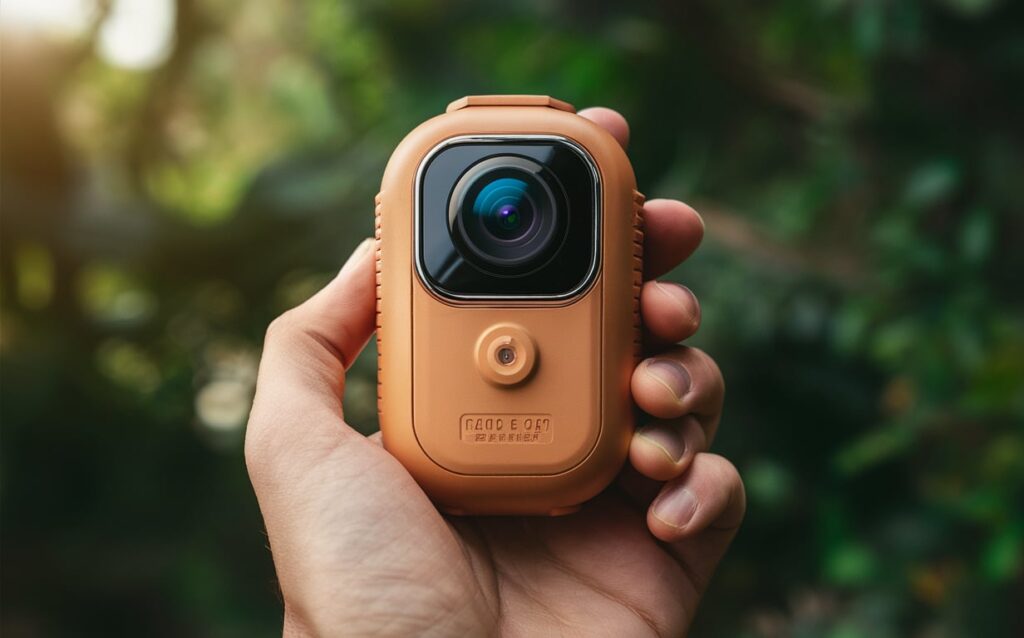
Frequently Asked Questions
How To Attach An Action Camera To A Helmet?
Use adhesive mounts or straps designed for helmets. Ensure the surface is clean and dry. Position the camera securely, avoiding obstructions. Adjust the angle for optimal recording. Test stability before use.
Is It Illegal To Mount A Camera On Your Helmet?
Mounting a camera on your helmet is generally legal. Check local laws for specific regulations. Ensure the camera doesn’t compromise safety. Always secure the device properly to prevent distractions or accidents. Laws may vary, so verify with your local transport authority for accurate guidance on helmet-mounted cameras.
Why Are Gopros Illegal On Motorcycle Helmets?
Gopros are illegal on motorcycle helmets due to safety concerns. They can compromise helmet integrity during accidents. Mounted cameras may also obstruct vision or create aerodynamic issues. Local laws vary, so always check regulations before using helmet-mounted devices. Prioritize safety and compliance to avoid legal issues.
Where Is The Best Place To Put A Camera On A Helmet?
Mount the camera on top or side of the helmet for best views. Ensure it’s securely attached and stable. Avoid obstructing your vision or compromising safety. Test different angles to capture the most engaging footage. Use compatible mounts for easy adjustments.
Conclusion
Mounting an action camera on a helmet is straightforward and rewarding. Secure your camera properly for clear shots. Ensure the mount fits your helmet well. Test the angle before your adventure. Adjust for the best view. Tighten all screws for safety.
Ready to capture thrilling moments? Now you can record rides effortlessly. Share your experiences with friends. Enjoy creating memories with your camera! Safe and exciting adventures await. Capture everything without missing a beat. Remember, every journey deserves a good story.
Your helmet camera is now ready. Happy filming!

